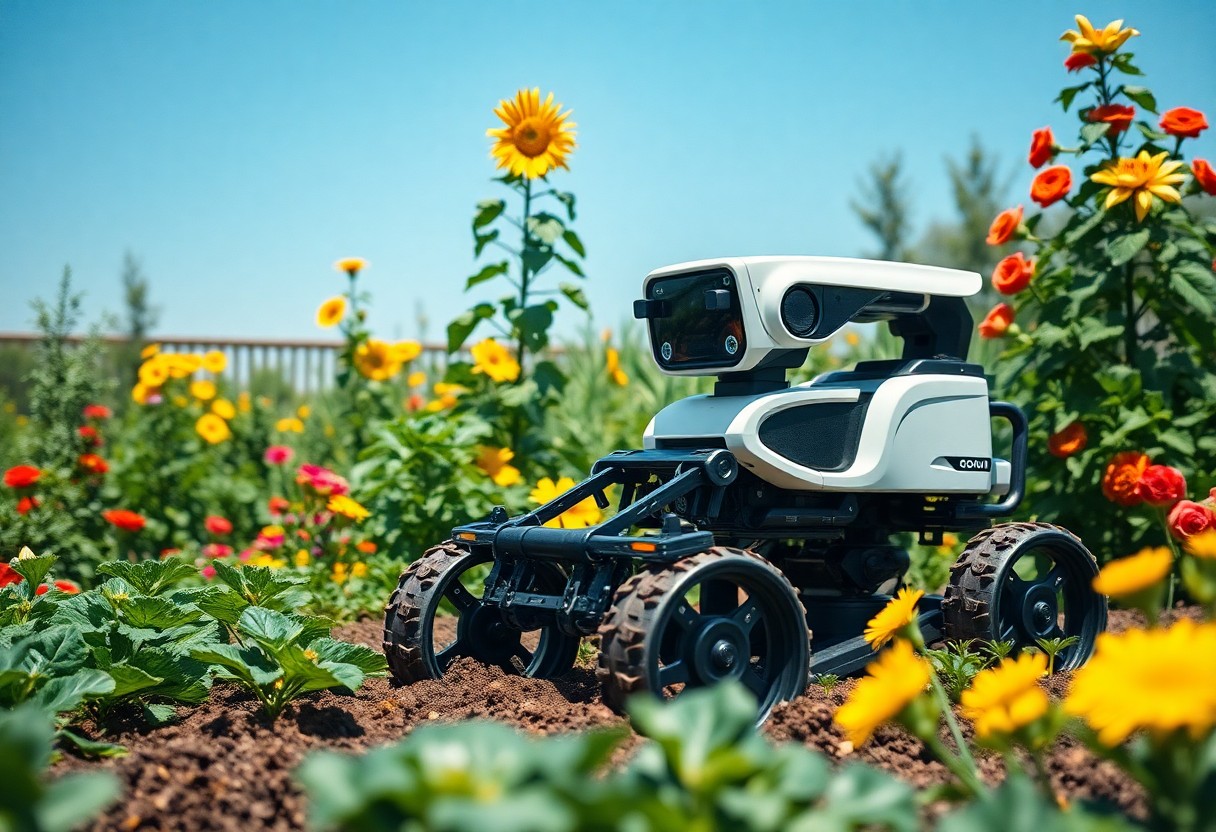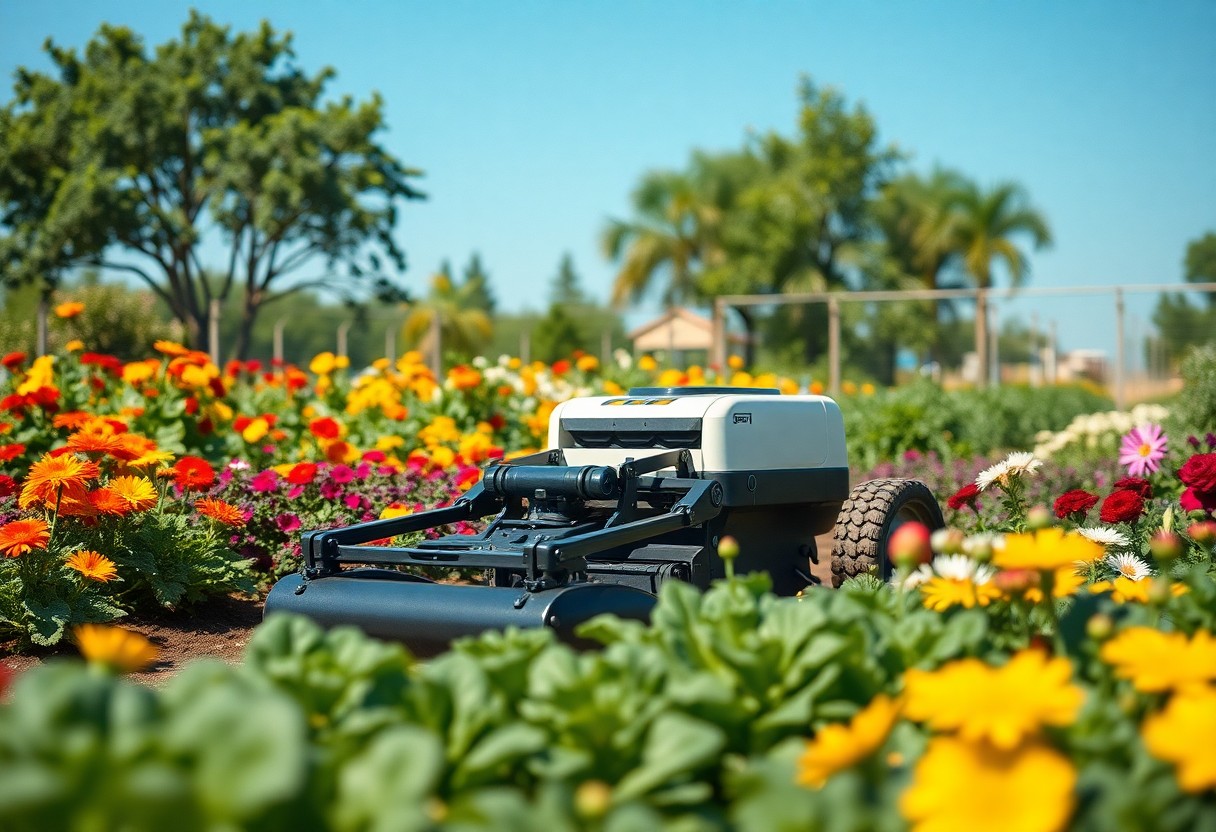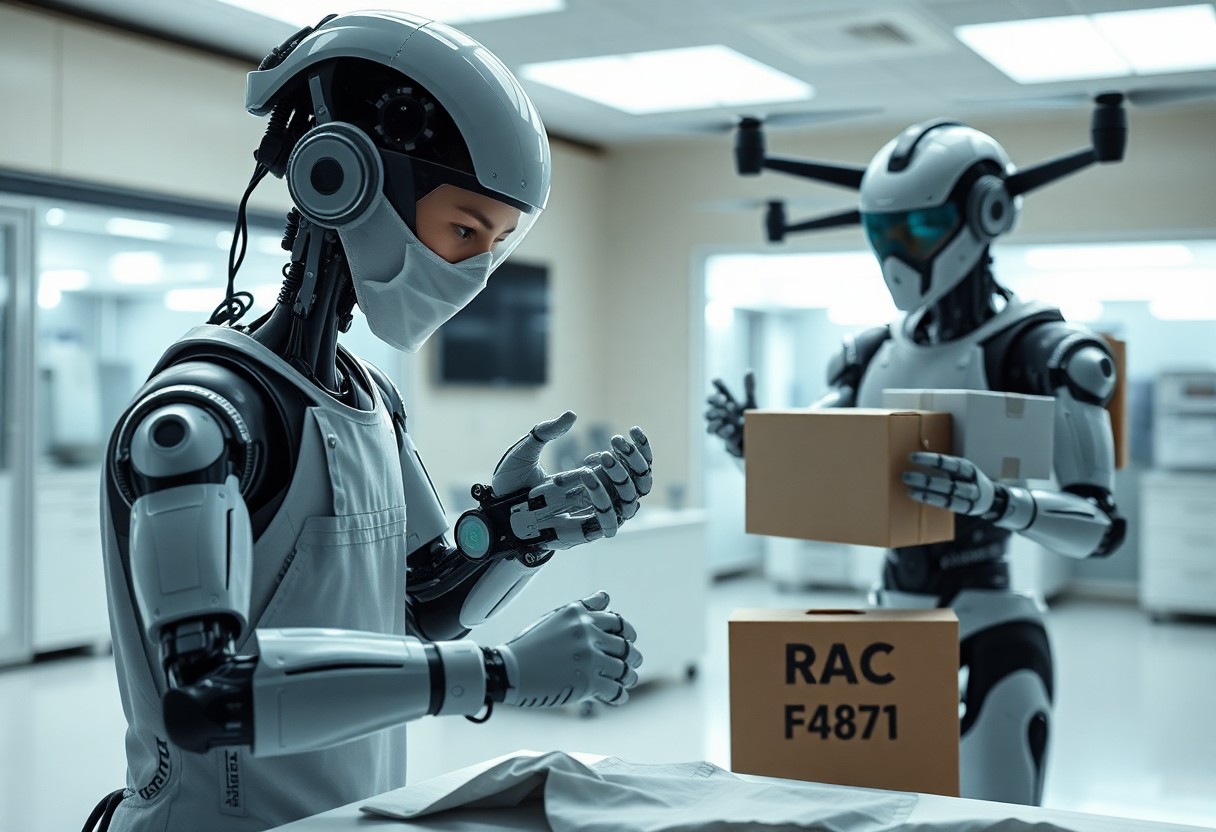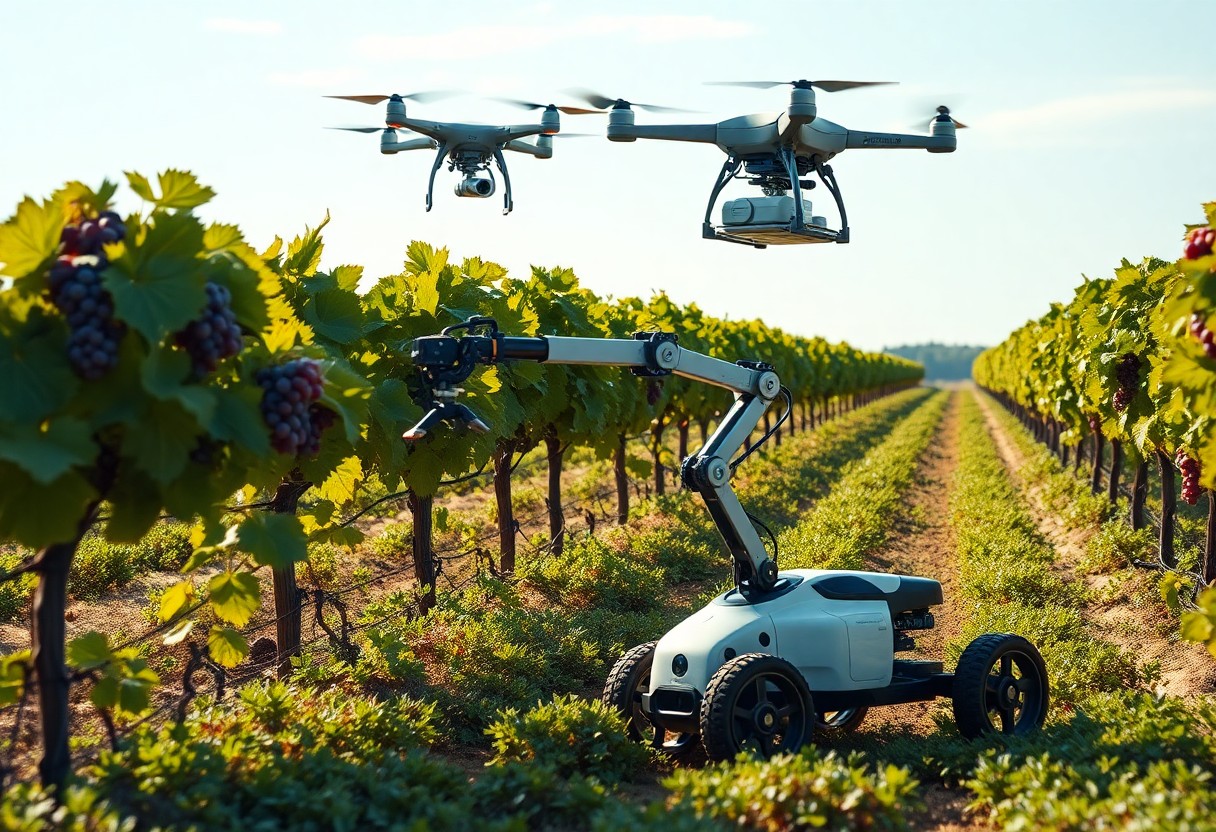Many gardeners face increasing challenges in maintaining their green spaces, from limited time to persistent weed issues. With the advent of robotic cultivators, you might wonder if these innovations offer the perfect solution for your gardening woes. Designed to enhance efficiency and reduce labor, robotic cultivators are making waves in the gardening community. In this post, we’ll explore how these intelligent machines can tackle some of modern gardening’s most pressing problems and whether they truly represent a transformative approach for you and your garden.
The Technological Advancements Fueling Robotic Cultivators
Robotic cultivators are rapidly evolving thanks to groundbreaking technological advancements. Innovations in sensors, GPS technology, and automation have enabled these machines to perform tasks with unprecedented accuracy. As you leverage these robots in your gardening endeavors, you’ll benefit from their ability to adapt to various terrains and recognize plant types, all while minimizing the need for chemical inputs or excessive labor. This integration of technology is turning once labor-intensive gardening practices into efficient, automated processes that save time and resources.
Precision Agriculture: Automation Meets Analytics
Your gardening efforts can be greatly enhanced by precision agriculture, which harnesses data analytics to optimize plant growth and resource use. Robotic cultivators equipped with state-of-the-art sensors collect real-time data about soil conditions, moisture levels, and pest activity. This information allows you to make well-informed decisions about irrigation, fertilization, and maintenance, leading to healthier plants and increased yield. Automation seamlessly integrates with analytics, providing you with a comprehensive approach to gardening that maximizes productivity while minimizing waste.
The Role of AI and Machine Learning in Optimizing Growth
Artificial Intelligence (AI) and machine learning are transforming how robotic cultivators function in your garden. These technologies analyze data patterns to predict plant growth and react to changing environmental conditions. As you incorporate AI-driven solutions, you’ll notice a marked improvement in how efficiently your garden operates, as these systems learn and adapt over time to better serve your unique gardening needs.
With AI and machine learning, robotic cultivators not only respond to current conditions but also anticipate future needs, allowing you to stay one step ahead. For instance, if a certain weather pattern is detected, the system can automatically adjust watering schedules or nutrient delivery, ensuring plants receive exactly what they require at the right moment. Additionally, the data gathered by these systems can provide insights into best practices tailored to your specific gardening environment. This feedback loop of continuous learning enhances overall growth and yield, empowering you to cultivate your garden with confidence and accuracy.
Addressing Environmental Concerns: Sustainability in Cultivation
Robotic cultivators are making significant strides towards sustainable gardening practices, positively impacting environmental concerns. These advanced machines can optimize soil health, reduce waste, and contribute to biodiversity by enabling more precise cultivation techniques. As you incorporate these tools into your gardening routine, you can enhance not just your garden’s productivity but also its ecological footprint, paving the way for greener practices that align with modern sustainability goals.
Resource Efficiency: Water and Energy Savings
Your robotic cultivator can greatly diminish water and energy consumption, making your gardening efforts more sustainable. By utilizing advanced sensors and algorithms, these robots can determine the precise amount of water needed for each plant, minimizing waste while ensuring optimal growth. This efficiency not only conserves vital resources but also curtails utility costs, allowing you to garden smarter and greener.
Reducing Chemical Dependency: A Move Towards Organic Practices
With automated precision in planting, weeding, and nurturing plants, robotic cultivators reduce the need for synthetic chemicals, fostering a more organic approach. By directly applying treatments only where needed, these machines can significantly lower pesticide and herbicide usage, aligning your gardening with eco-friendly principles.
Embracing this transition toward organic gardening not only protects pollinators but also enhances the quality of your harvest. For instance, you can opt for robotic tools equipped with targeted applicators, ensuring that nutrients and organic pesticides are delivered exactly where required. This precision reduces runoff and collateral damage to non-target plants while fostering a healthier set of soil microbes vital for plant growth. By moving away from broad-spectrum chemicals, you can create an environment where both your garden and the surrounding ecosystem can thrive harmoniously.
Unpacking Consumer Needs: What Gardeners Really Want
Identifying what you, as a gardener, truly desire is necessary for the success of robotic cultivators. Gardeners want efficient tools that save time and effort while delivering effective results. Features that simplify the gardening process, enhance yield, and provide valuable data about plant health are high on the list. Furthermore, you seek solutions that address common challenges, such as pest control, soil quality, and crop monitoring, which could ultimately transform your gardening experience.
Accessibility and Ease of Use for Hobbyists
For hobbyists, the allure of robotic cultivators lies in their user-friendly designs that promote effortless integration into your gardening routine. You benefit from intuitive interfaces, instructional videos, and responsive customer support, making it simple to explore cutting-edge technology without feeling overwhelmed. The availability of mobile apps that allow real-time monitoring and control from your smartphone enhances the ease of use, letting you focus on what you love most—gardening.
Advanced Features for Professional Growers
Professional growers focus on achieving optimal efficiency and productivity through advanced features in robotic cultivators. Technologies like AI-driven analytics, precision planting, and automated nutrient delivery help you maximize yields while minimizing costs. The ability to integrate with existing agricultural systems for seamless management provides a competitive edge, enabling you to make data-driven decisions that enhance crop performance and sustainability.
- AI-driven analytics for plant monitoring.
- Precision planting capabilities.
- Automated irrigation and nutrient delivery.
- Remote monitoring via mobile devices.
- Integration with existing agricultural software.
| Feature | Description |
|---|---|
| AI-driven analytics | Real-time insights into plant health and growth patterns. |
| Precision planting | Ensures optimal spacing and depth for seedlings, maximizing growth. |
| Automated nutrient delivery | Tailored fertilization schedules that adjust based on plant needs. |
| Remote monitoring | Control your cultivator from anywhere using a smartphone or tablet. |
| Software integration | Combines all farming data into one platform for streamlined management. |
Advanced features cater to the unique demands of professional growers by employing automation and data analytics. For instance, AI-driven analytics provide insights into optimal planting strategies, allowing you to anticipate crop needs and adjust accordingly. This precision helps to maintain both productivity and sustainability in agricultural practices, ultimately leading to higher profits and reduced input waste. As these technologies evolve, you can expect even more sophisticated solutions tailored to your specific needs.
- Higher productivity and efficiency through automation.
- Better decision-making with data-driven insights.
- Enhanced resource management for sustainable practices.
- Continuous optimization of growing conditions.
- Flexibility in scaling operations based on demand.
| Key Benefit | Explanation |
|---|---|
| Increased yield | Precision farming increases crop output while reducing waste. |
| Cost-effectiveness | Automation lowers labor costs and reduces manual errors. |
| Improved crop quality | Real-time data ensures optimal growing conditions for plants. |
| Time savings | Automation frees up your time for other critical tasks. |
| Sustainability | Resource-efficient practices contribute to environmental stewardship. |
The Economic Impact: Are Robotic Cultivators Worth the Investment?
Investing in robotic cultivators can initially seem daunting, but the long-term benefits may justify the costs. With the ability to increase efficiency, reduce labor costs, and enhance crop yields, many farmers find these innovations pay for themselves over time. However, the decision hinges on factors like farm size and specific crop types. For detailed insights, you can explore trends in robots in agriculture: simple tasks prove challenging for …
Analyzing Cost vs. Benefit for Small and Large Scale Farms
The financial implications of robotic cultivators vary significantly between small and large farms. For small farms, the substantial upfront costs may be a barrier, especially when margins are tight. However, large-scale farms benefit from economies of scale. Investments may yield substantial savings on labor and increased productivity, making robotic cultivators an attractive option for larger operations.
The Potential for Job Shifts in the Agricultural Workforce
The rise of robotic cultivators inevitably leads to shifts in the agricultural workforce. Although these technologies may displace certain labor roles, they also create demand for skilled technicians and operators. Understanding the necessary skills for future agricultural jobs will be crucial as the sector adapts to a more automated landscape.
As robotic cultivators gain traction, the need for retraining becomes paramount. Workers who once performed manual tasks may find opportunities in machine maintenance or programming. For instance, regions transitioning from labor-intensive practices may see a spike in demand for technical training programs that prepare workers for the enhanced roles. Such shifts can foster a more knowledgeable workforce, proving that technological advancements are not just threats, but avenues for innovation and growth in the agricultural sector.

The Future of Gardening: Fostering a New Era of Cultivation
Your gardening experience is evolving, as robotic cultivators pave the way for a new era of cultivation, merging technology with nature. These advanced tools not only enhance efficiency but also empower you to grow a wider variety of plants, regardless of your gardening knowledge or experience. With programmable settings and AI-assisted features, your garden can thrive even in unfavorable conditions, promising a significant shift in how you approach sustainable gardening practices.
Rethinking Urban Gardening: Space-Saving Solutions
Beyond the Garden: Integrating with Smart Home Systems
Final Words
Drawing together the insights on robotic cultivators, you can consider them a promising solution for many of the challenges faced in modern gardening. These innovative tools offer precision, efficiency, and the ability to work tirelessly, which can enhance your gardening experience. However, it’s crucial to evaluate their suitability for your particular garden needs and preferences. Embracing technology can bring significant benefits, but a balanced approach that includes traditional methods may yield the best results for cultivating a thriving garden.







